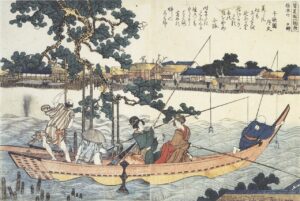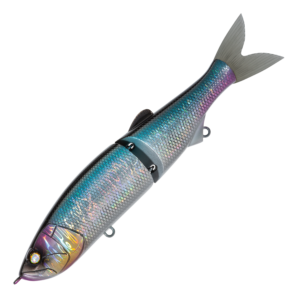Fishing in a Fish Farm? Tasting Japan through Fishing
Do you want to catch an amberjack easily or to make sure to catch and eat the Japanese’s favorite red seabream during your quick visit to Japan?
You can make these wishes come true, when you visit some fisheries in Japan.
There are fisheries who farm fish and let leisure fishermans to catch them.
In this article, I will show you what it is like and how it is like to fish there.
The Place
Firstly the typical fishery looks like the picture below.
The floating piers are forming rectangles, and the walls of nets are hanging under it. Inside of this net, fish are settled.
Though these piers are placed near the shore, many of them have a depth of 10 m.
Fish
The most popular fish species is the red seabream (Madai, Pargus major). Most of the settled seabreams are 30 to 40 cm.
And other fish species are as follows.
Japanese amberjack (Hamachi or Buri, Seriola quinqueradiata)
Yellowtail amberjack (Hiramasa, Seriola Lalandi)
Greater amberjack (Kanpachi, Seriola dumerili)
White trevally (Shima-aji, Pseudocaranx dentex)
Grunt (Isagi or Isaki, Parapristipoma trilineatum)
Grouper (Mahata, Epinephelus septemfasciatus)
These are some of the most popular species, and some places have other species too.
As you may imagine, these fish are not only fun to catch but also great to eat.
Fishing
Fishing with a float is the most popular way. Though it has enough depth to play by different depth ranges, there is not so much room to fish horizontal directions. In order to fish at a certain depth, the float rig is favored .
The rod is 3 to 3.5 m, often telescopic. It has the softer tip and parabolic or slower actions, with a powerful middle section. In some cases, tips can absorb the bite action detected after the float is pulled down into the water. And this soft tip works well when you are trying to search for a fish without the float. Its parabolic action is needed to deal with a big fish.
For the ease of use, spinning reels are used. It should hold the nylon of 0.28 mm to 0.37 mm thickness or braided line 0.25 mm to 0.38 mm. The required length of the main line is not in question, as the fishing space is limited, just for resume fishing after the line trouble.
A float can hold 1 - 5 gou of sinker (4 to 20 g). Instead of connecting the main line to the hook leader with a normal swivel, it is preferred to use the cushioning rubber integrated with the sinker.
The length of the main line to the fish is very short at any time during fishing, therefore the cushioning of the line is not abundant. To avoid the risk of this situation, people are using this cushioning.
Hooks are of the Iseama type (you can understand the basic types of Japanese hooks in this blog page of mine.)
Bait
What the fishery may provide you with the basic baits for your fishing. The basic choice is a paste bait, dead sand lance and filet fish meat. For people who target the big amberjack, they often sell live bait, jack mackerel at the spot.
To get better results, enthusiasts are preparing the good assortment of baits.
Image of baits for fishery, from this page of a private blog. From clockwise starting at the fish, sand lance, paste bait, prawns, filet fish meat (probably bonito), yellow colored chicken.
The fishing procedure is very simple. Adjusting the depth, placing the bait on the hook, and throwing it in. The basic start point to know the depth to the bottom, and start to fish near the bottom first.
Cost and Services
The basic cost to fish in such a fishery is to pay as an entrance fee. The entrance fee of the adult male is about 12,000 JPY (about 75 to 80 USD), and it is lower for females and children. With this fee, you can stay there for the whole day and you can bring back all the fish you catch.
Though there are plenty of fish in the place, sometimes it is not easy to catch. To make visitors enjoy more, some fisheries would newly add some fish when people start fishing. New fish are purer and easy to react to the bait.
To enjoy fishing in such fisheries is virtually equal to enjoying eating your catch.
For those who cannot filet fish, these fisheries provide filetting service, with additional cost.
And for your interest, there are English websites which explain the way to filet fish in the Japanese way; Japanese Food Lab.
Or when you ask a small Izakaya (small sake bar) to cook your catch, they can readily do it for you.
Including this eating experience, this kind of fishing in such fisheries will be a memorable travel experience in Japan.

